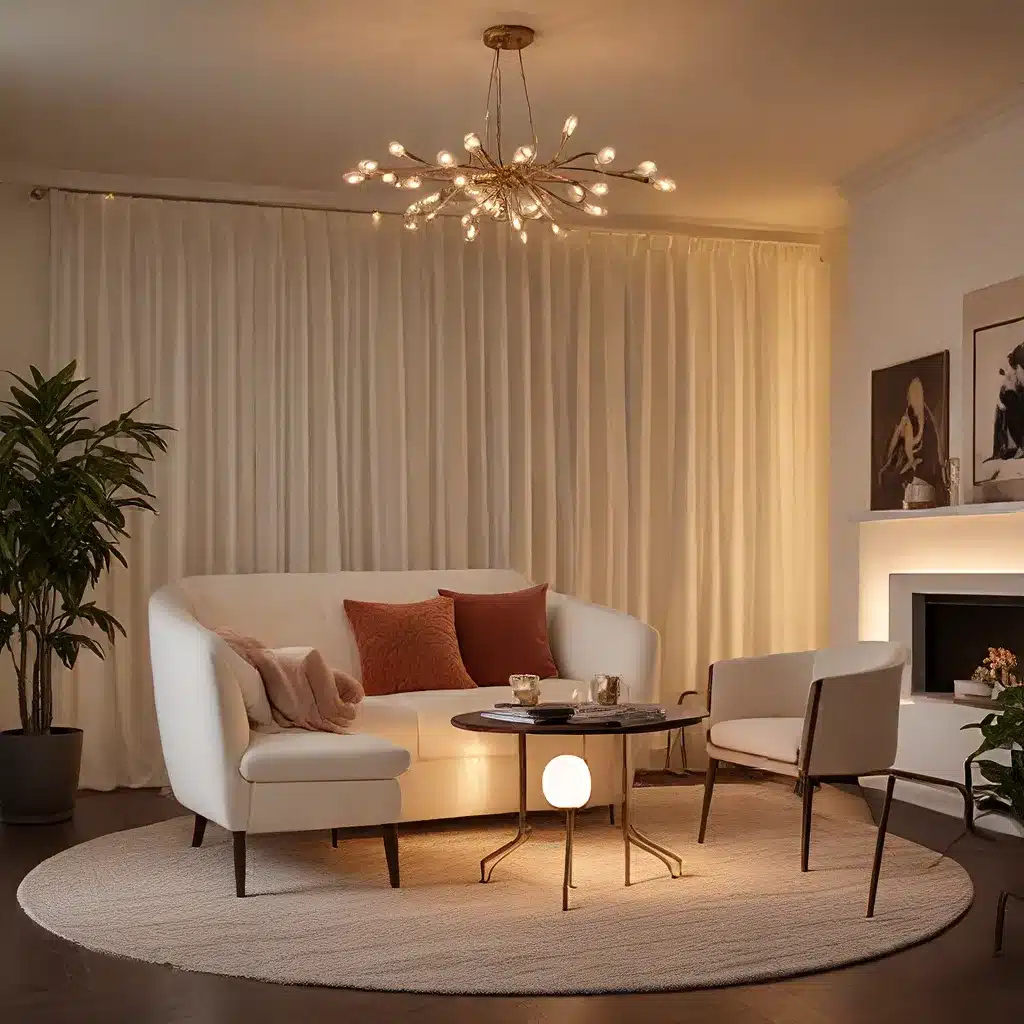
Lighting plays a vital role in shaping the ambiance, functionality, and overall aesthetic of any interior space. From home offices to living rooms, the strategic use of lighting can transform a room, elevating it from merely functional to truly inspiring. In this comprehensive guide, we’ll explore the latest lighting trends and design strategies that can help you energize, invigorate, and inspire your living spaces.
Unlocking the Power of Layered Lighting
Effective interior lighting is not just about a single source; it’s about creating a harmonious symphony of illumination. By incorporating various lighting layers, you can achieve a dynamic and visually appealing environment that caters to your specific needs and design preferences.
Ambient lighting, such as recessed fixtures or pendant lights, serves as the foundation, providing a warm and even glow that sets the overall mood. Task lighting, on the other hand, is essential for focused activities like reading, working, or cooking, ensuring ample illumination where you need it most.
Accent lighting, often in the form of wall sconces or track lighting, adds depth and drama, highlighting architectural features, artwork, or decorative elements. By thoughtfully layering these lighting types, you can create a harmonious and visually stimulating space that seamlessly blends function and aesthetics.
Harnessing the Psychological Impact of Color Temperature
The color temperature of your lighting plays a significant role in how a room feels and how it impacts your mood and productivity. Warm tones, such as soft whites or amber hues, create a cozy and inviting atmosphere, perfect for relaxing living rooms or intimate dining areas.
On the other hand, cool-toned lighting, like bright whites or bluish hues, can energize and stimulate the senses, making them ideal for home offices or creative spaces. By understanding the psychological effects of color temperature, you can strategically choose lighting that aligns with the desired ambiance and functionality of each room.
Balance is key when it comes to lighting color temperature. Incorporate a mix of warm and cool tones throughout your home to create a sense of harmony and visual interest. This can be achieved through a combination of task lighting, ambient lighting, and accent lighting, each with its own color temperature, to craft a cohesive and visually appealing design.
Maximizing Natural Light for a Radiant Glow
While artificial lighting plays a crucial role in interior design, harnessing the power of natural light can have a transformative effect on any space. Strategically placed windows, skylights, and mirrors can help to amplify and distribute natural illumination, creating a bright and airy atmosphere that can boost mood and productivity.
Consider how the natural light coming through the windows affects the appearance of your paint colors. The amount and direction of natural light can significantly impact the perceived tone and undertones of your chosen hues, so it’s essential to take this into account when selecting paint colors for your interior spaces.
In rooms with limited natural light, opt for lighter, more reflective paint colors that can help to maximize and diffuse the available illumination. Conversely, in spaces with abundant natural light, you can experiment with bolder, more saturated paint colors that will respond beautifully to the bright conditions.
Personalize Your Spaces with Thoughtful Lighting Accents
While functionality is undoubtedly important, lighting can also be a powerful tool for self-expression and personal style. Incorporate unique lighting fixtures, such as statement chandeliers, artisanal wall sconces, or decorative table lamps, to infuse your interiors with a touch of individuality.
Work with an interior designer to curate a personalized lighting scheme that aligns with your design aesthetic and lifestyle needs. Professional designers can help you navigate the vast array of lighting options, ensuring that each fixture not only serves a practical purpose but also enhances the overall visual harmony of your space.
Embrace Sustainable and Energy-Efficient Lighting Solutions
As sustainability becomes an increasingly important consideration in interior design, it’s essential to explore energy-efficient lighting options that can help reduce your carbon footprint while still delivering exceptional illumination.
LED lighting has emerged as a popular and eco-friendly choice, offering a wide range of color temperatures, brightness levels, and energy-saving capabilities. Incorporate dimmable LED fixtures throughout your home to provide versatile lighting control and minimize energy consumption.
Additionally, explore innovative lighting technologies, such as motion sensors or daylight harvesting systems, that can automate the adjustment of lighting levels based on occupancy and natural light conditions. By embracing sustainable lighting solutions, you can create a visually stunning and environmentally responsible home environment.
Conclusion: Embrace the Rhythm of Light for a Transformative Interior
Lighting is the heartbeat of any interior space, setting the tone, enhancing functionality, and ultimately shaping the overall emotional and sensory experience of a room. By mastering the art of layered lighting, understanding the psychological impact of color temperature, and harnessing the power of natural illumination, you can energize, invigorate, and inspire your living spaces, transforming them into harmonious and visually captivating havens that cater to your unique needs and design preferences.
Remember, the rhythm of light is a symphony waiting to be conducted. Embrace the creative possibilities and let your interiors dance to the luminous melody that reflects your personal style and enhances your well-being.

